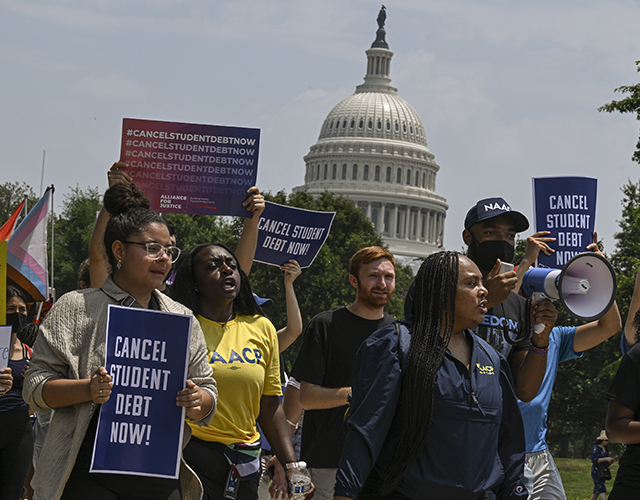Federal student loan borrowers who initially took out smaller loan amounts may be eligible for debt cancellation sooner than they anticipated.
Starting in February, people enrolled in the Biden administration’s new income-driven repayment plan known as SAVE who originally borrowed $12,000 or less for college and have made at least 10 years of qualifying monthly payments would immediately have any remaining debt wiped out, Education Department officials said Friday.
The SAVE plan, which reduces payments for millions of borrowers, opened for enrollment last August. But some of its benefits, like the shortened path to forgiveness, were not set to take effect until July 2024. Most other income-driven repayment plans, in which payments are readjusted each year based on earnings and household size, forgive any remaining balance after a set number of years, usually 20.
SAVE cuts that term by half for people who initially borrowed $12,000 or less and also reduces the repayment timeline for those who originally borrowed $21,000 or less. For every $1,000 above $12,000, a borrower can receive forgiveness after an additional year of payments. For example, if someone originally borrowed $13,000, any remaining balance would be forgiven after 11 years of payments.
Small borrowers should apply for SAVE
The department said it is strongly encouraging those who originally borrowed $12,000 or less to apply for the SAVE program as soon as possible.
“Today’s announcement will help struggling borrowers who have been making loan payments for years, including many who never graduated from college,” said James Kvaal, the Education Department’s undersecretary.
It wasn’t immediately clear how many people would be eligible, but the administration said it is reaching out to federal borrowers whose balances and time in repayment indicate they may benefit. In February, the department will begin notifying those enrolled in SAVE whose loans are being forgiven. Borrowers won’t have to apply for the relief.
Most federal student borrowers have direct loans, which are required for enrollment in the SAVE program; people with other federal loans will need to take an extra step.
Abby Shafroth, director of the student loan borrower assistance project at the National Consumer Law Center, noted that borrowers with a Perkins loan or what’s known as a FFEL loan (the acronym stands for Federal Family and Education Loan) can enroll in SAVE to receive the potentially shortened repayment term, but they must first consolidate their debt in a direct loan. “And when they submit their consolidation application, they can apply for SAVE at the same time,” Shafroth said.
Rough restart
There are about 6.9 million borrowers enrolled in the SAVE plan, including 2.9 million people who are new to an income-driven repayment plan, as well as 700,000 who switched from another plan, the Education Department said. The remainder were already in the plan that SAVE replaced (known as REPAYE, or Revised Pay as You Earn program).
Among those enrolled in SAVE, 3.9 million have no monthly payment, administration officials said, while others with monthly bills are paying about $117 less than they would have on REPAYE.
Restarting federal student loan payments for more than 28 million borrowers after a 42-month pandemic pause hasn’t gone smoothly, particularly for those attempting to enroll in the SAVE program. Many have had their payments miscalculated, and others have experienced long wait times and other issues.
Servicers had 1.25 million pending applications at the end of October, more than 450,000 of which had been lingering for at least a month. Senior administration officials said that most of the backlog has been cleared, and borrowers’ applications are being processed in a more timely manner.
c.2024 The New York Times Company. This article originally appeared in The New York Times.







